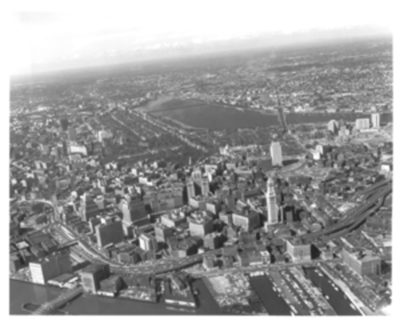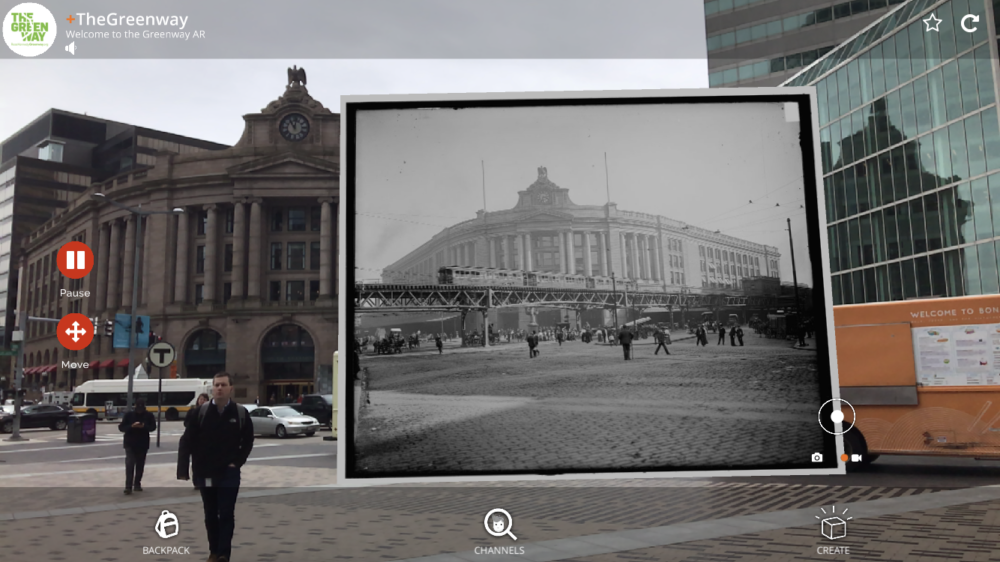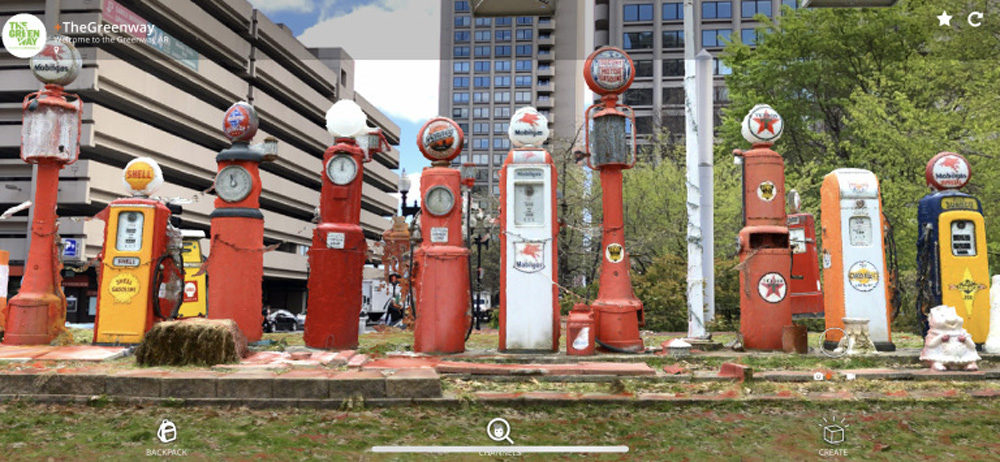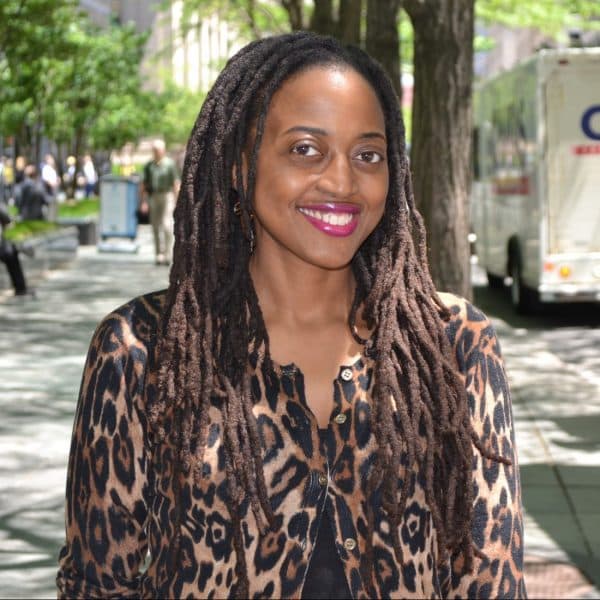Advertisement
An Augmented Reality Experience On The Greenway Reminds Us Of Life Before The Big Dig
From the 1950s to the early 1980s, a six-lane elevated highway swung through downtown Boston. The goal was to alleviate traffic — but quickly proved ineffective. The next big plan? The infamous Big Dig, which put I-93 underground.
Today, you could stand on top of that highway — have lunch with friends, play games or take in the rotating art installations the Rose Kennedy Greenway Conservancy plans every year. It's remarkable that what used to be the site of a chaotic highway, and an even more chaotic construction site, has become an idyllic park.

This summer — about 11 years after opening — the Greenway is paying homage to its past with an exhibition titled "The Auto Show" that involves sculptures, photos and other multimedia pieces. Perhaps the most resonant piece included is an augmented reality exhibition that explores the history of the park as a transportation corridor and imagines its future. (Boston Cyber Arts partnered with AR platform Hoverlay to create it.)
The exhibition includes commissioned work from three distinguished artists, Nancy Baker Cahill, John Craig Freeman and Will Pappenheimer, and 10 photos documenting 100 years of transformation curated and narrated by architectural and urban historian, Amy Finstein.
Those photos highlight the physical transformation and eventual impact of the automobile on the landscape of the Greenway, Finstein says. Each picture "had to be on the current Greenway, and it had to capture the exact viewpoint from that same location at a different point in time." For example, one photo depicts an elevated railway in front of South Station around 1905, next to a more current view.
At the time, there were two modes of railroad transportation, Finstein explains. "One was kind of the long-distance railroad coming into South Station, but then there is elevated railroad, which was used for local transportation."

One of her favorite stills has the Custom House Tower in the background, “so you can kind of find yourself in the city,” she says. The photo, taken in 1939 underneath the Atlantic Avenue Elevated, features three modes of transportation: the elevated railway, a horse-drawn carriage and a car. It illustrates “the eve of the ascendancy of the automobile,” Finstein explains. “It aligns with a view today from the Greenway. [It’s] roughly across the street from the Long Wharf Marriott, looking west, back toward the Custom House tower.”
Only visible through an app, the exhibition blends the digital world with the viewer’s current surroundings through the overlay of images, text and sound. The medium makes space for viewers to move through art and experience it in a different way.
History buffs and art lovers who download the free Hoverlay app get guided through the park with on-screen arrows. There are also on-site directional cubes that include a photo of the artist and artist statement, an aerial shot of the park from 1962 next to a 2017 aerial, and other introductory information.
When you hold up your smart device, the app detects if there’s artwork available to see. If you’re too far to the right or left, arrows will appear onscreen to help steer you in the right direction.
Walking along the park’s path that stretches from Chinatown to North Station, viewers encounter big shards of glass and debris flying outward in a widening circle in Cahill’s piece “Collision.” It contends with “two parts of driving that involve physics and moving through space,” Cahill shares.
When developing “Collision” and her second piece “Speed,” which looks to me like the exhaust from an early locomotive or car, Cahill thought about the “exhilaration and experience of speed,” she explains. Velocity, the consequences of speed, human error, and the uncomfortable tension between human and machine, informed her approach.
Another kind of shattering occurs in Pappenheimer’s “CarDrop-V” when a blue SUV falls from above and breaks into pieces. Next, brightly colored cars appear to crash into one another (but remain intact) in “CarPark-X,” an airborne parking system of the future.

Deeper into the park, Freeman, a long-time AR artist and Emerson professor, takes a more whimsical approach to the auto show theme with “Fossil Fueled.” In his piece, a cluster of large-scale gas pumps of a bygone era appear in one direction and a single Gulf pump spins mid-air in another. The cha-ching of what sounds like an old-fashioned cash register can be heard. “Fossil Fueled,” and his second offering, “Roadside Detritus,” a flooding Newburyport street scene, urges viewers to contemplate the effects of global warming.

The critical piece, “looks at the history of fossil fuel consumption… and hearkens back to that kind of idea, that utopic kind of vision at the start of the automobile [era] without ever considering the consequences,” he offers. Consequences we’ll continue to face since fossil fuels dominate U.S. energy consumption.
It’s difficult to imagine the park’s past if you didn’t live through it. Finstein hopes the exhibition “encourages the viewer to think about where they are as opposed to being kind of a passive user or observer.”
More than a decade has passed since the artery was torn down. What was once a source of disconnection, has now become a place for locals and travelers alike to enjoy.
“Now that the corridor has been transformed into this park, Finstein says, “it literally reconnects the two areas of the city to one another and it kind of gives back that space to the city.”
And ultimately, back to the people.
The Augmented Reality Art exhibition is free and open to the public. Free tours are available now through Oct. 10.
